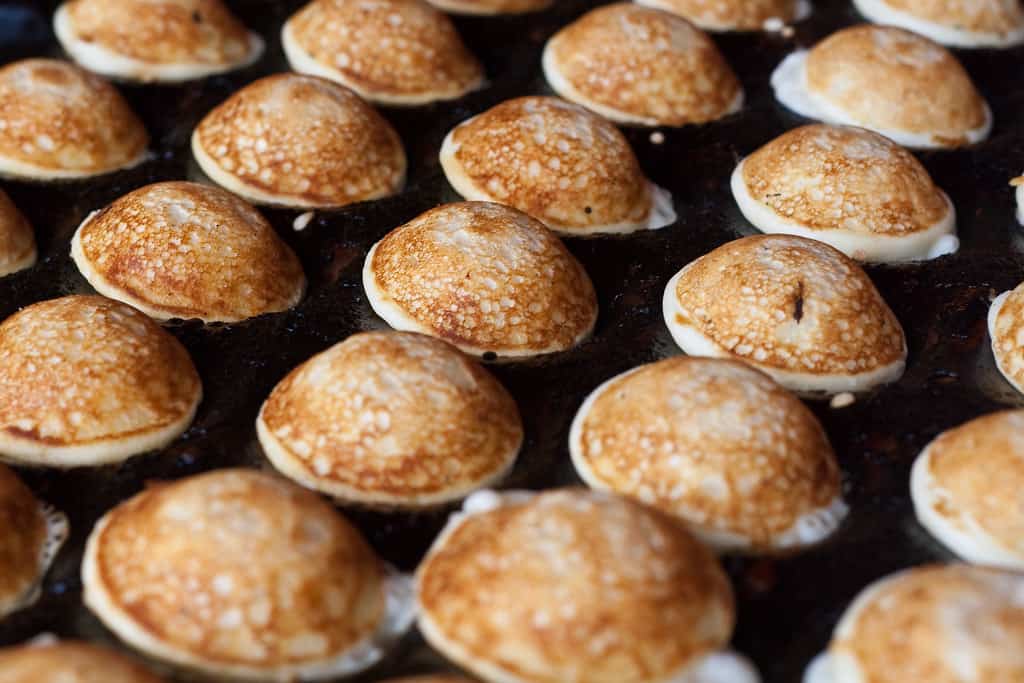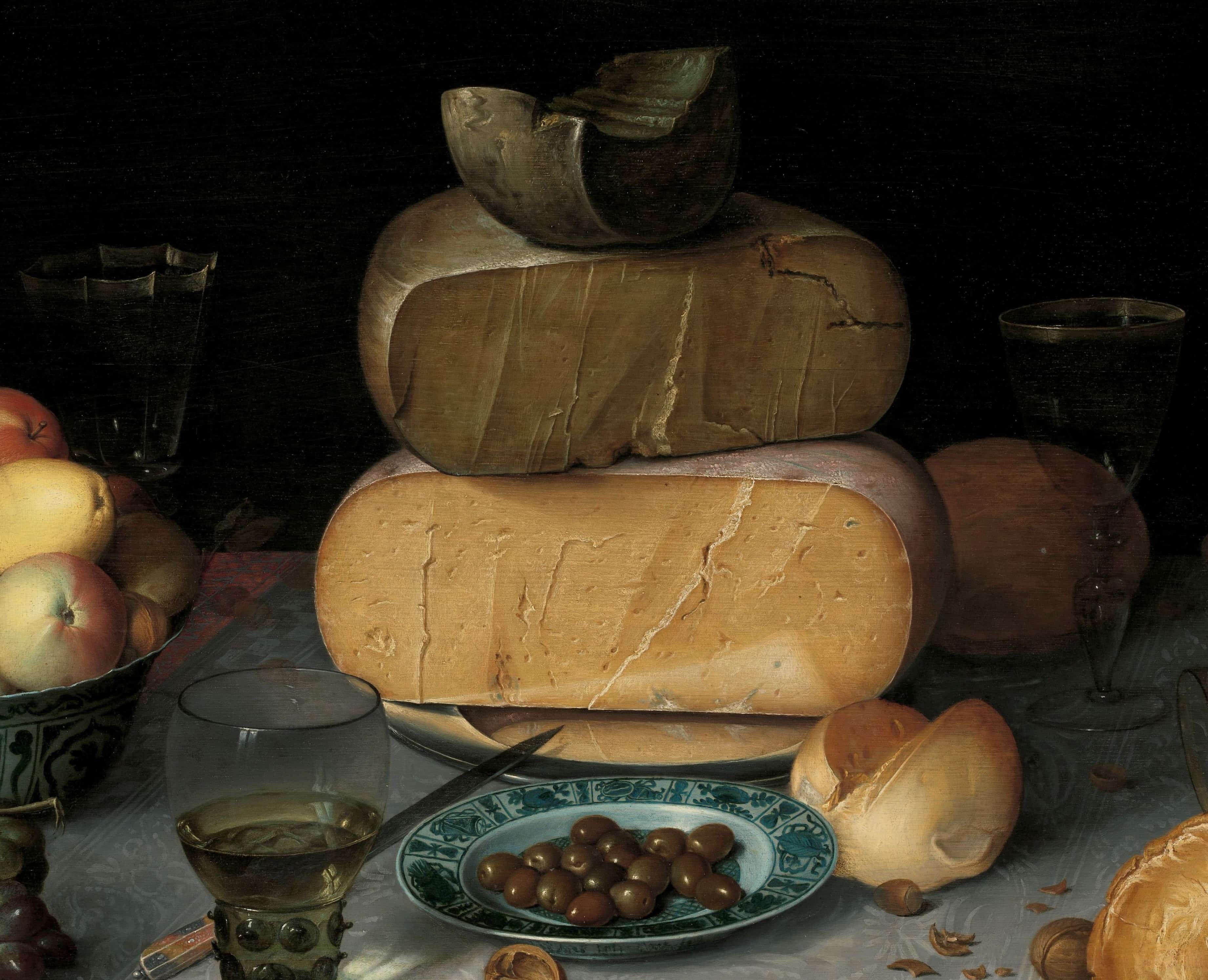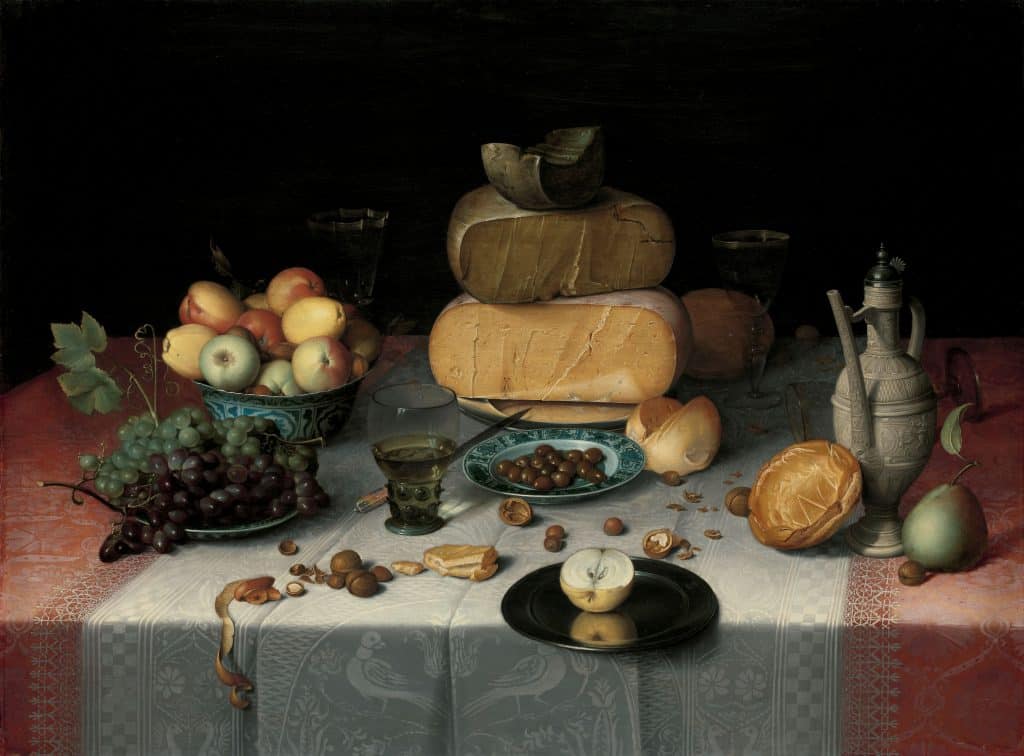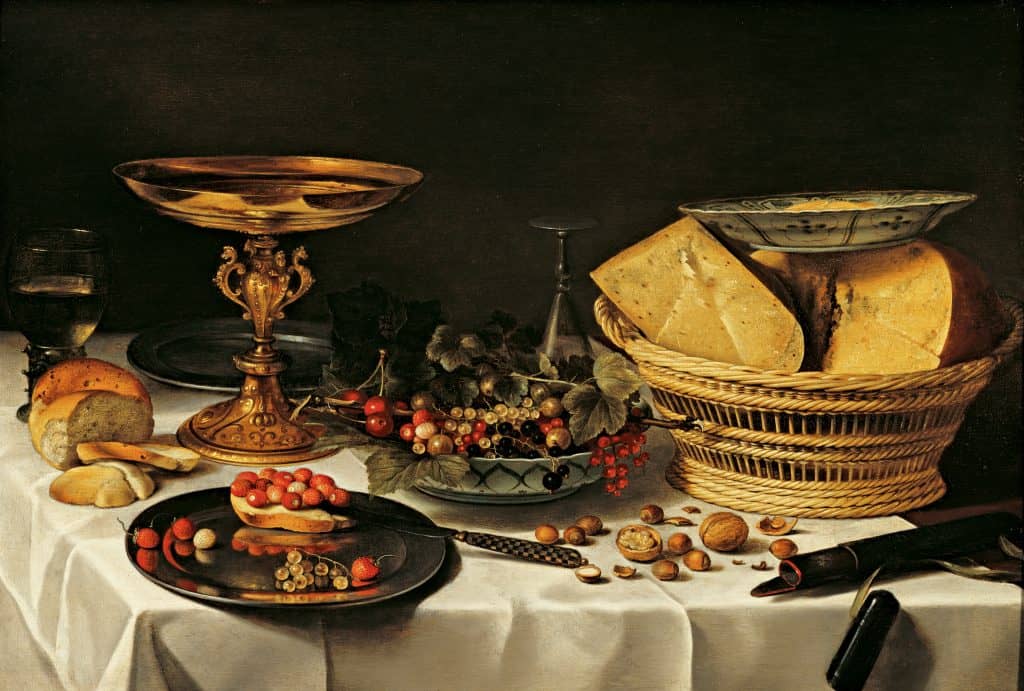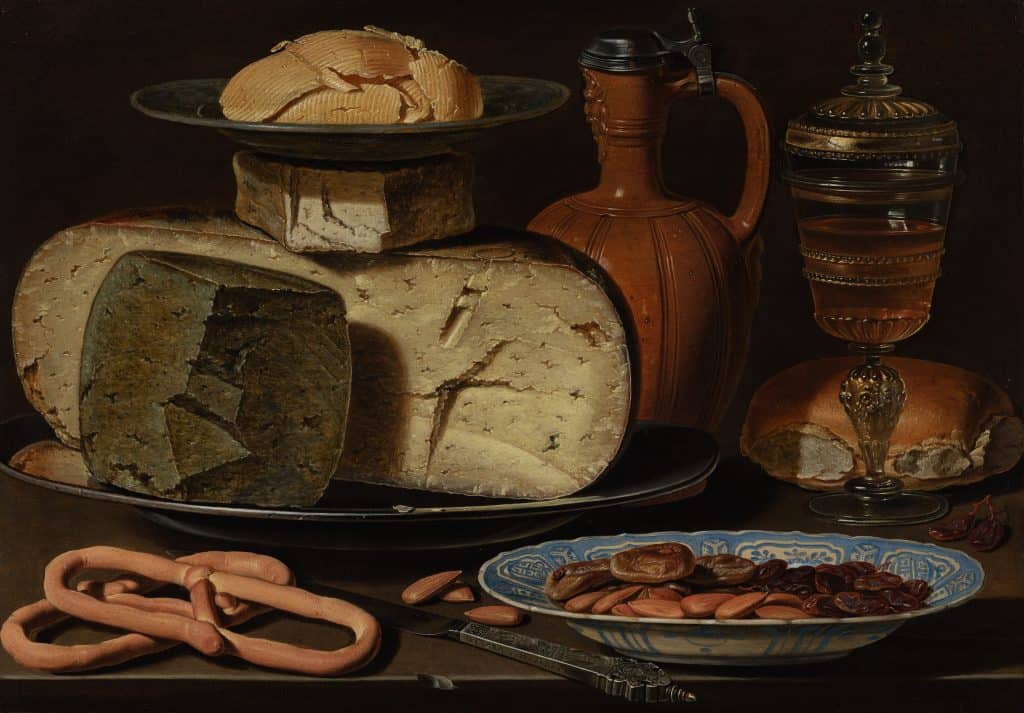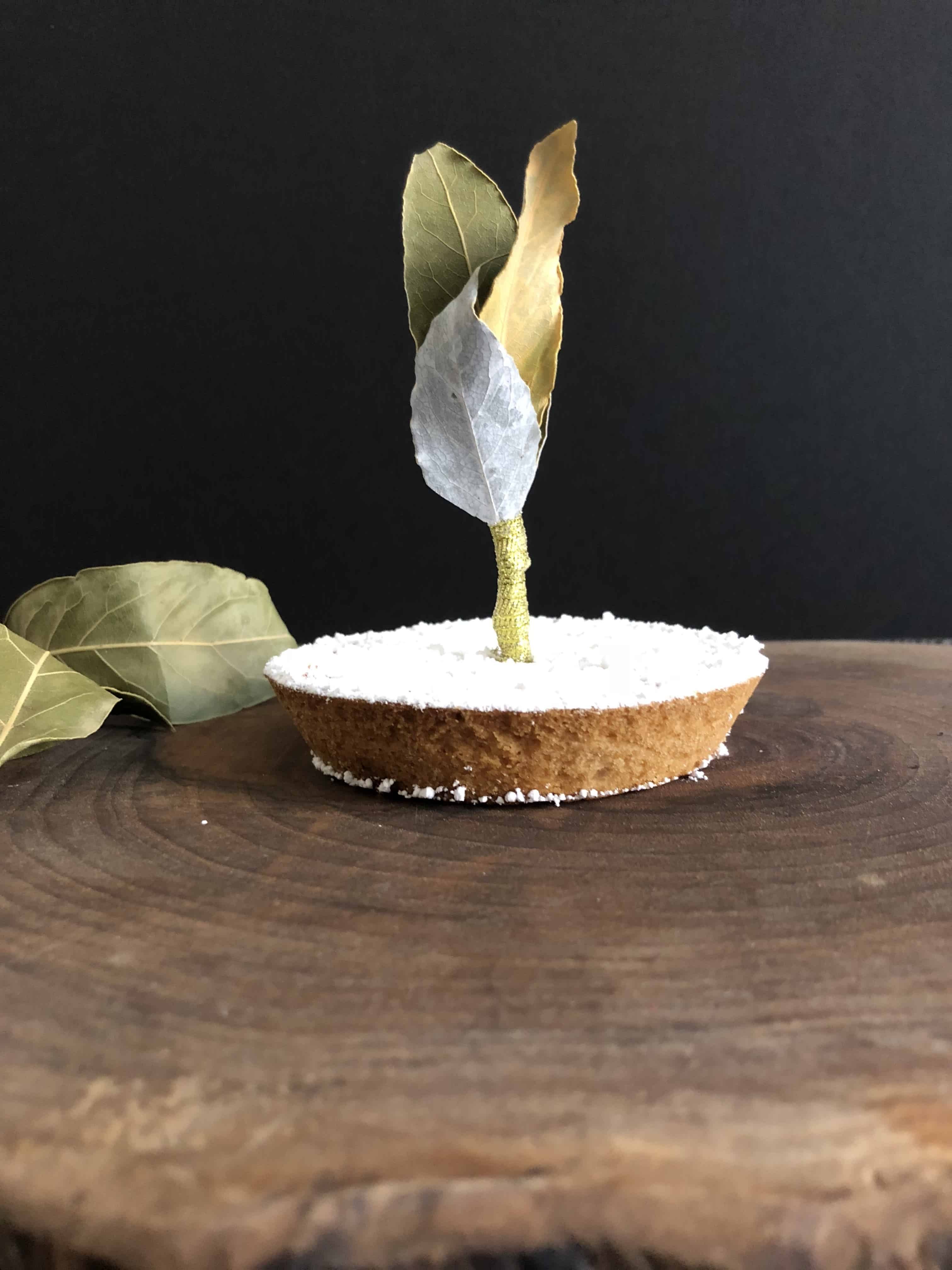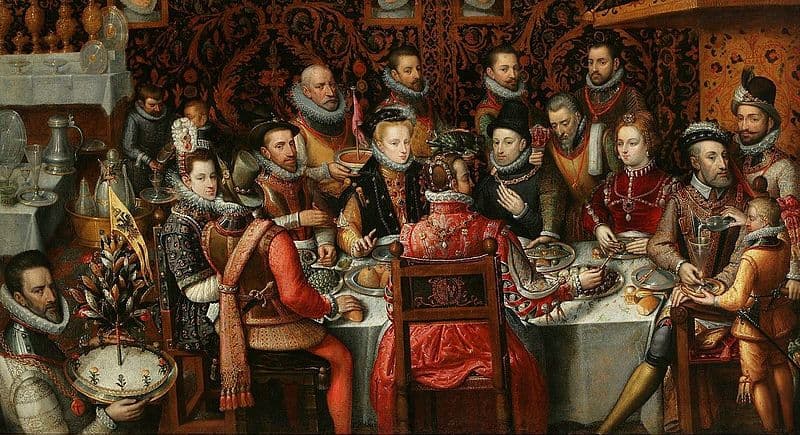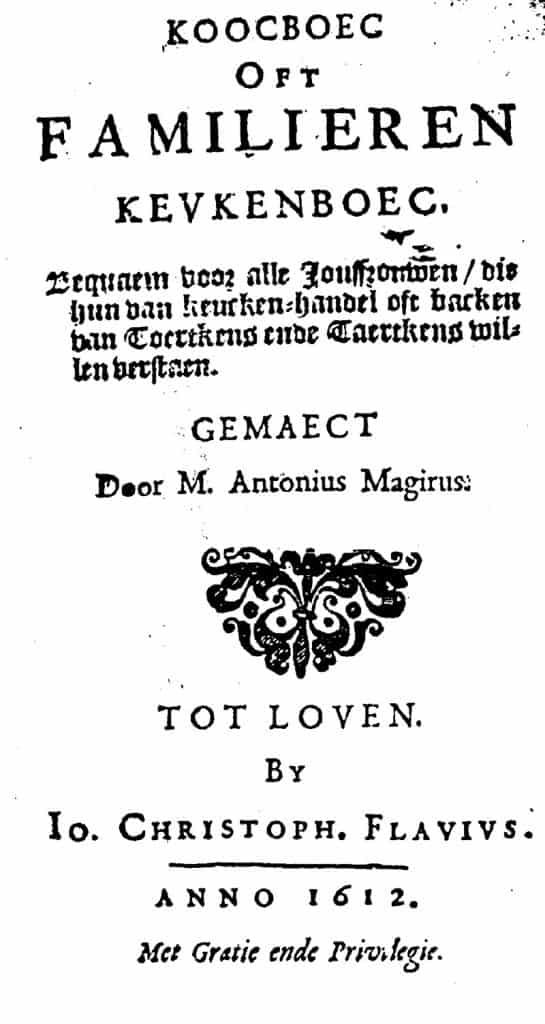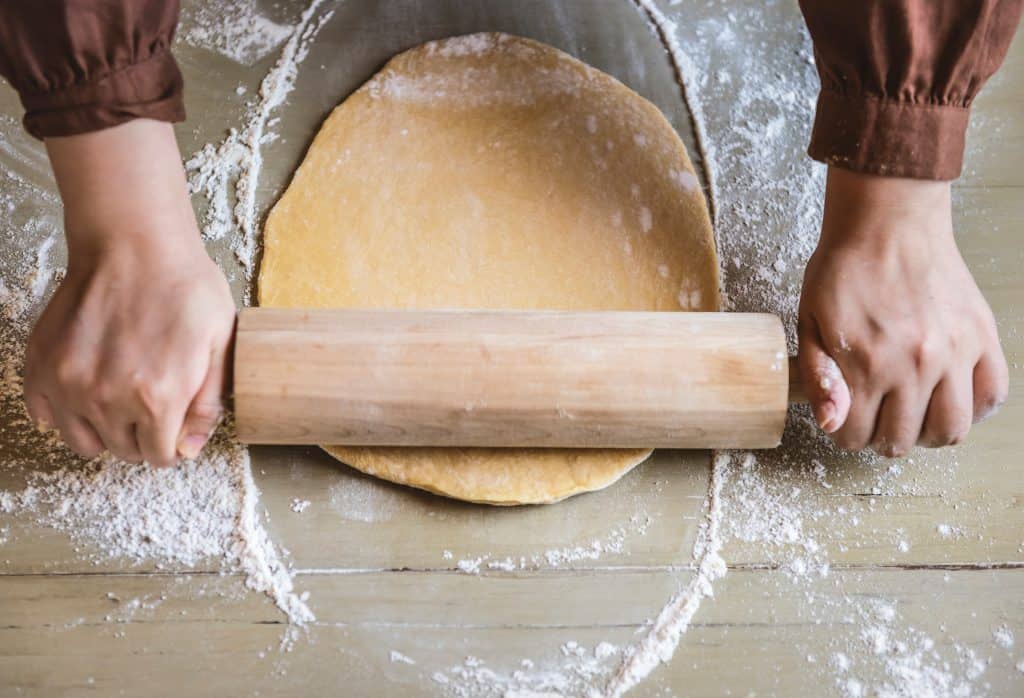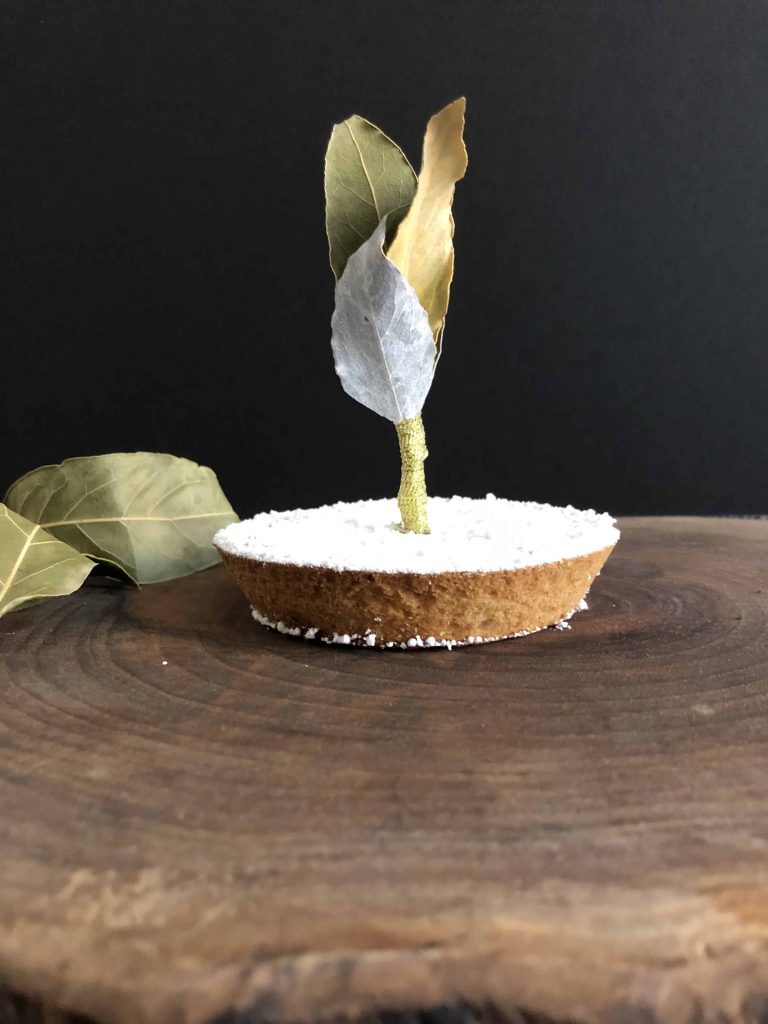We want poffertjes, we want poffertjes! Oh, please… make us some poffertjes, they taste so good!
This was almost the first thing that I heard a few days ago, when I arrived at my family´s home, where I went to spend a few days. For those of you who are not familiar with poffertjes, they are small dutch pancakes, served with icing sugar and butter. Simply delicious… and a winner dish for the entire familiy. Last week I made more than 200 of them and they all dissapeared! Just saying…
Today is about these pancakes, with not just one, but three different recipes for you to try out. And you know, I´m not just looking for old recipes, but I also try to find historic images, the older the better.
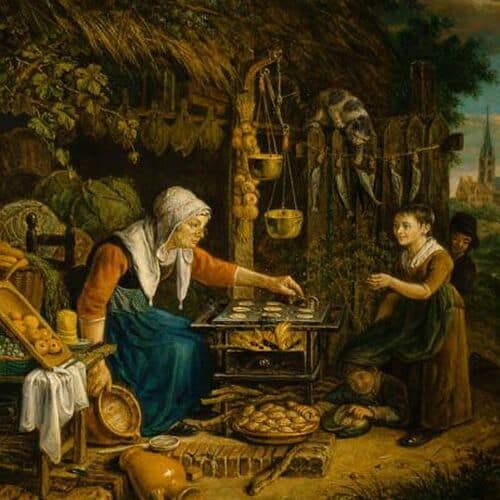
As I was telling you, they are small round pancakes, baked in a special pan or on an iron plate, with little holes to shape them and give them a bit more volume. On this painting, the woman is making them on that type of iron plate with holes. Even though we can´t see it that well, we do see the baked pancakes next to it, on a plate on the floor. I don´t find it strange at all that the three kids are lurking around to pick one or two from the plate. This situation is actually quite familiar, when I was baking them myself last week, some of my little guests sneaked up on me and dissapeared again with a poffertje in their mouth, as if I wouldn´t notice. By the way, I hope the resemblance with the cook itself doesn´t match as well…
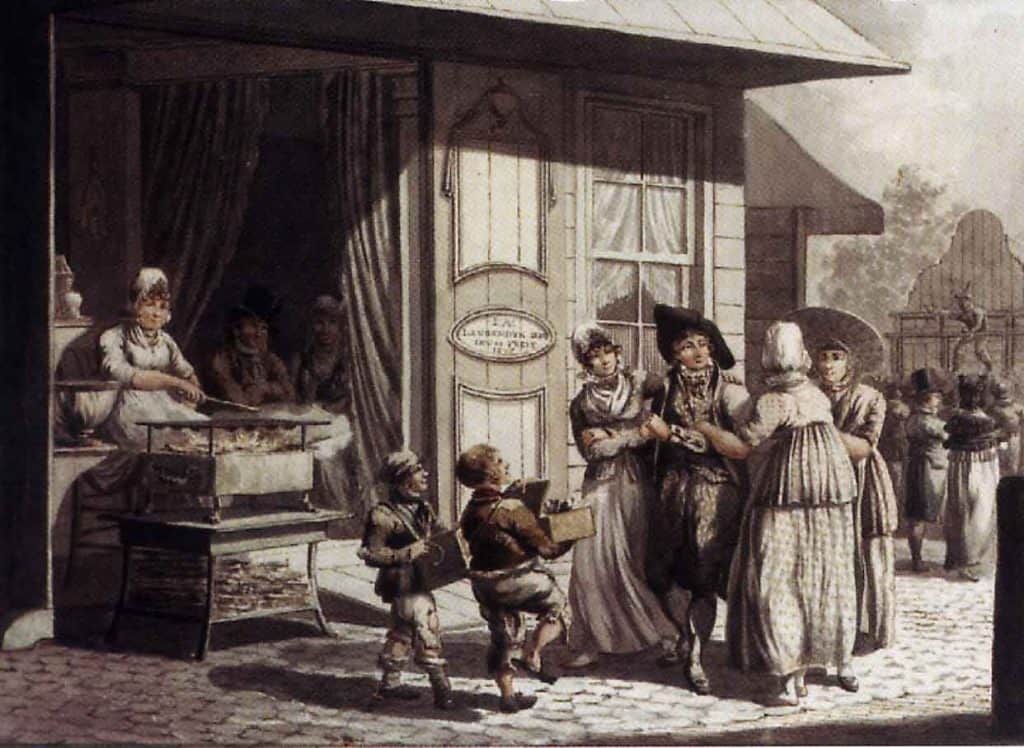
In this other image we can see the holes for the poffertjes better, as the drawing of this iron plate is made from a different view. These stalls in which the poffertjes were baked were very common on fairs and markets, even today, but the poffertjes are also quite often made at home, in a smaller round pan. However, if you see the grills they use nowadays in these stalls, they are enormous. And the speed at which the cooks turn those little suikers, almost at the speed of light. Well… you know what I mean.
It makes your mouth water, doesn´t it?
Don´t worry, I will tell you how to make them right now. The first recipe of this cute pancake is found in De volmaakte Hollandsche keuken-meid, a recipe book from 1746. Actually, in the addendum that came with the third edition, in 1754. It´s an anonymous Dutch recipe book, however, the introduction states that the author is ´a distinguished lady, recently passed away in The Hague´. Even though we don´t have a name, we know the distinguished character of the book and its audience. Even the title is quite clear about it: The perfect Dutch kitchen maid. Luckily we´re not perfect ourselves, but we do have enough enthusiasm to get on with the two recipes of poffertjes we can find in this book.
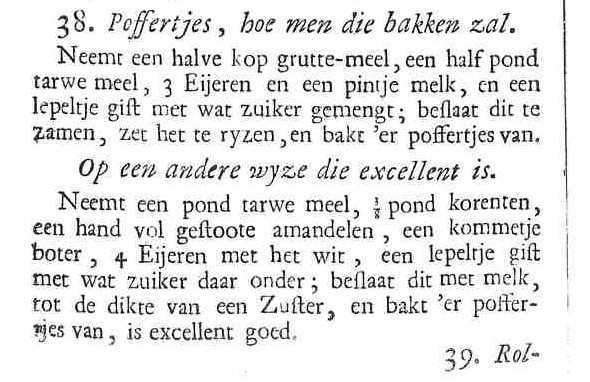
Poffertjes in 1754 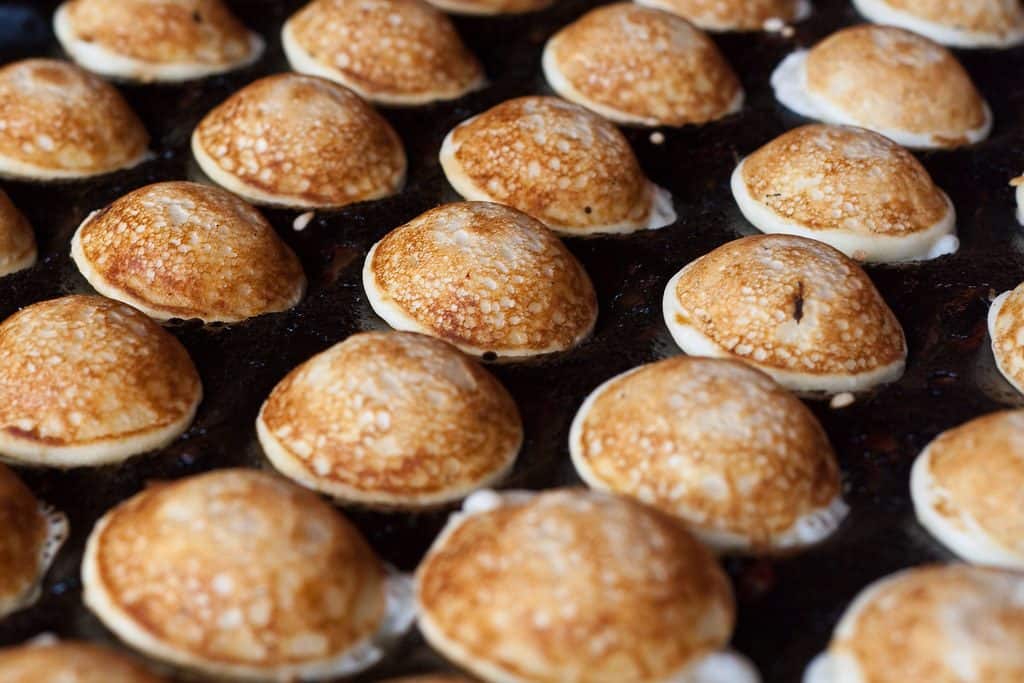
Poffertjes, picture by Tijs Zwinkels, Flickr.com (CC BY-SA 2.0)
38. Poffertjes, how they should be baked. Take half a cup of buckwheat flower, half a kilo of wheat flour, 3 eggs, a pint of milk*, a little spoon of yeast mixed with a little bit of sugar; mix everything together, let it rise and fry poffertjes.
Another way which is excellent. Take half a kilo of wheat flower, 3/8 of a kilo of raisins, a handful of ground almonds, a little bowl of butter, 4 whole eggs, a little spoon of yeast mixed with some sugar; mix everything with milk, until you obtain a thickness like a Sister**, and fry poffertjes, they are excellent good.
*Approximately 600 ml **This corresponds to a recipe of a tart/cake with almost the same ingredients. In this recipe book we can find instructions for a ´Big Sister´ and for a ´Small Sister´. I´m very curious to know what they are and taste like…
I can´t wait to try these two old recipes, but I´m afraid I will have to wait for my poffertjes pan to arrive. Don´t ask why, but at my own place, I still haven´t got one. Once I receive it, I will get cooking. In the meantime, I will share this contemporary recipe with you as well. I have made them quite a few times, and they are very good.
Poffertjes
Ingredients:
Makes about 30-35 poffertjes. They are prepared in a pan such as this. You can make them in a regular pan, but they will be bigger and flattened, similar to American pancakes.
For the batter:
300 g milk
15 g fresh yeast
1 egg
15 g sugar
pinch of salt
100 g sour cream (reduced-fat)
200 g flour (you can use buckwheat flour instead, or a combination of the two)
50 g melted butter
To serve:
icing sugar
butter at room temperature
Method:
Mix all the ingredients together with a whisk until smooth. Cover up with a humidified cloth or place some cling film directly onto the batter to avoid it from hardening. Leave the batter to rest for an hour.
Heat up the poffertjes pan on a medium heat, and grease it with butter using a brush. Fill the holes with the batter using a spoon or even better, with a plastic bottle that has a dispenser. Turn the poffertjes with a skewer or a small fork before the surface is cooked. Let them brown and place them onto a plate. To make it easier you can pick them up one by one with the skewer. For large quantities you can place the plate over a pan with hot water to keep them warm.
Serve warm, dusted with icing sugar and a few pieces of butter. Aproximately 12 poffertjes per portion.
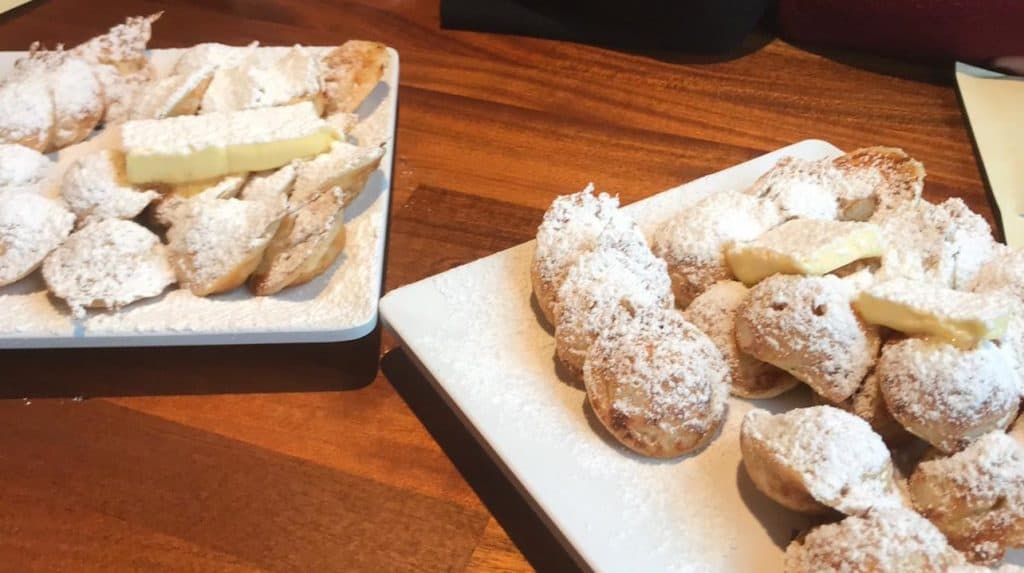
Let me know what you think about these poffertjes from the North, I´m sure they will be a success. Meanwhile I will keep on investigating because I believe there are recipes even older than the two I mentioned today, images as well probably. Until next time!
References:
J. van Dam, J. Witteveen. Koks & keukenmeiden. Amsterdam: Nijgh & Van Ditmar, 2006.

